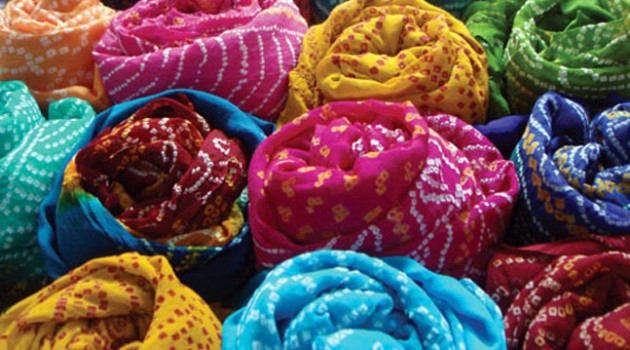The most popular Ajmer Ajmer
Describing the temples Govind Dev Ji Temple North Udaipur
and is well-known for observing the groups of 108 temples in one place. The
center of attraction of this temple is the 50 feet high multi-faced idol of
Lord Shiva, which is completely made out of black stone.
1. Achal Nath Shivalaya
Achal Nath Shivalaya is a famous Shiv temple constructed in 1531 by
Nanak Devi. She was the queen of Rao Ganga. There is a water reservoir known as
‘Ganga Bawari’ located near the Shivling
inside the shrine. It is a drinking water tank. Temple
Achal Nath Shivalaya construction completed on 21st May 1531. This old
temple is a place of religious faith on Lord Shiva as the diety of people of Jodhpur
Visiting Time : Achal Nath Shivalaya is open 10 am to 1 pm and 2 pm to
4.30 pm
(Daily)
2. Adishwar Temple
This Adishwar
Temple
3. Ajmer
Ajmer
Ajmer Sharif Dargah is the tomb of the
Hazrat Khwaja Moin-d-din Chisti, who was the founder and Islam in India
Later Mugal emperorHumayun, Akbar,
Shahjahan and Jahangir constructed mosques here.
Main tomb gate is known as Nizam Gate which
was erected by Shahjahan so it is also called Shahjahani Gate. After it there
is Buland Darwaja. Urs flag is hoisted on it which marks the beginning of the
Urs festival.
Ajmer
Khidmat : This
ritual is cleaning of mazar and offerings by flowers. Khidmat is done two times
a day. One at 4:00 am with the call of azan and second at 3:00 pm. Morning
Khidmat is performed half an hour before the Fajar prayer and evening khidmat
is performed only by men. Ladies are not allow the khidmat and offering of
flowers and sandalwood takes place with the khadim reciting fateha.
Lighting (Roshni) : Khadims
bring candels indise the tomb with the beating of drums and lights up the lamps
in the four corners with the recitations of sacred words.
Karka: This
is the closing ceremony of the tomb and takes place after an hour of isha
prayer. Before 20 minutes of closing the door when the fifth part of the night
passes, the clock sound five times. The devotees asked to leave the tomb and
three khadims clean the tomb. After that bell rings six times to mark the
qawwals sing a special karka song and the door are closed after that.
Sama (Qawwali) : It is the song in the praise of Allah which is sung by
qawwals who are devotional singers at the Mehfil-e-Sama in front of the mazar
after all namaz are over. Also Quran recital takes place every day.
Best
Time to Visit Ajmer
Urs festival is the best time to visit Ajmer Ajmer
Location of Dragah Shariff
It is located in Ajmer
Timings:
Winters : Gates opens at 5:00 AM and closed at 9:00 PM
Summers : Gates opens at 4:00 AM and closed at 10:00 PM
Winters : Gates opens at 5:00 AM and closed at 9:00 PM
Summers : Gates opens at 4:00 AM and closed at 10:00 PM
4. Akshardham
Temple
Akshardham temple provides the real glimpse
of indian architecture, cultural heritage and sculptures of hindu gods to the
visitors. It is located in the Vaishali Nagar, Jaipur.
Timings: 10.30 AM to 06:00:00 PM. Closed on Mondays
How To Reach Akshardham Temple
By Road: Akshardham Temple Ambedkar Mandir Rd.
By Rail: Akshardham
Temple, Jaipur is well connected through Jaipur Railway station to major cities
railway stations like Delhi, Agra, Mumbai ,Chennai, Bikaner, Jodhpur, Udaipur,
Ahmedabad.
By Air: Akshardham
Temple can be reach through Jaipur Airport, also called Sanganer Airport which
is well connected with regular domestic flights to Delhi, Kolkata, Mumbai,
Ahmedabad, Jodhpur and Udaipur.
5. Baba
Ramdeo Temple
Known for its divine and devotion, Baba Ramdeo temple has long lost of
followers and stories of local beliefs. This mysterious temple has tiny rock at
its entrance with the inscription "Enter at your own risk". This
makes travellers more curious towards the temple.
With devotees, adventurous people also visited it for the spectaclar
views from the top of the temple which could only be possible after climbing
through rickety stairs against vertical rock pillars. But now proper stairs are
made which easier the task to reach at top and take amazing views.
How To Reach Baba Ramdeo Temple , Jodhpur
By Road: Baba Ramdeo Temple
is located at a distance of 7 km from Jodhpur Baba Ramdev Rd.
By Rail: Baba Ramdeo Temple is well connected through nearest Jodhpur
Railway station to major cities railway stations like Delhi, Agra, Mumbai,
Chennai, Bikaner, Jodhpur, Jaipur, Ahmedabad.
By Air: Baba Ramdeo Temple can be reach through nearest Jodhpur Airport
(6 km) which is well connected with regular domestic flights to Delhi, Mumbai.
















